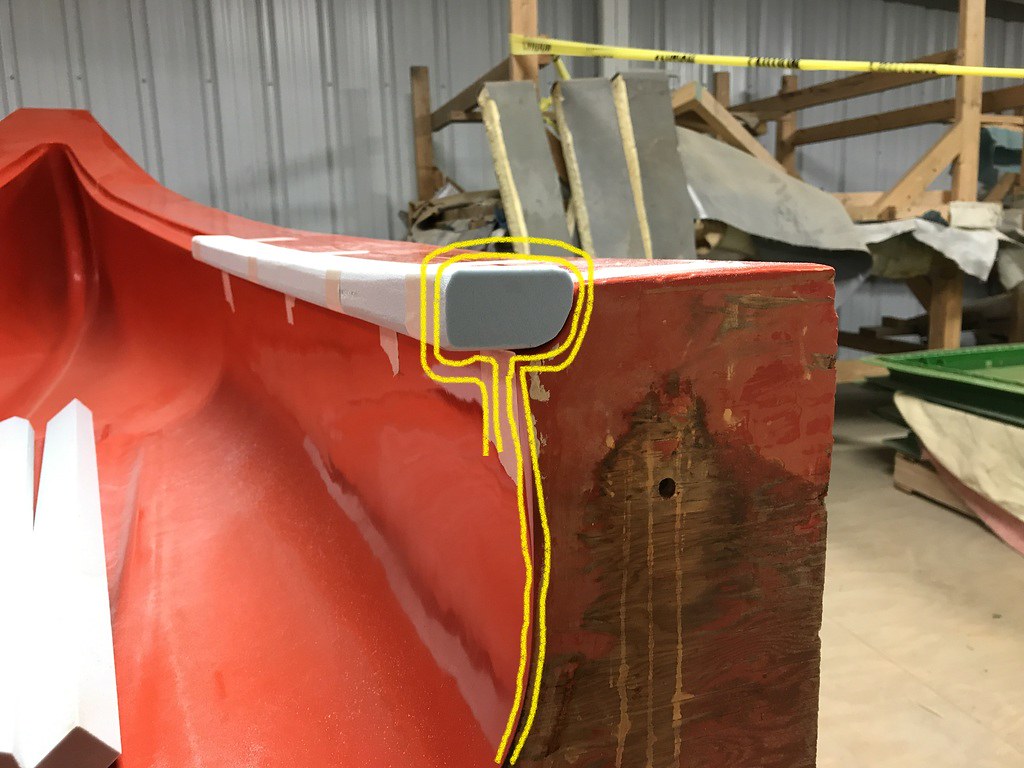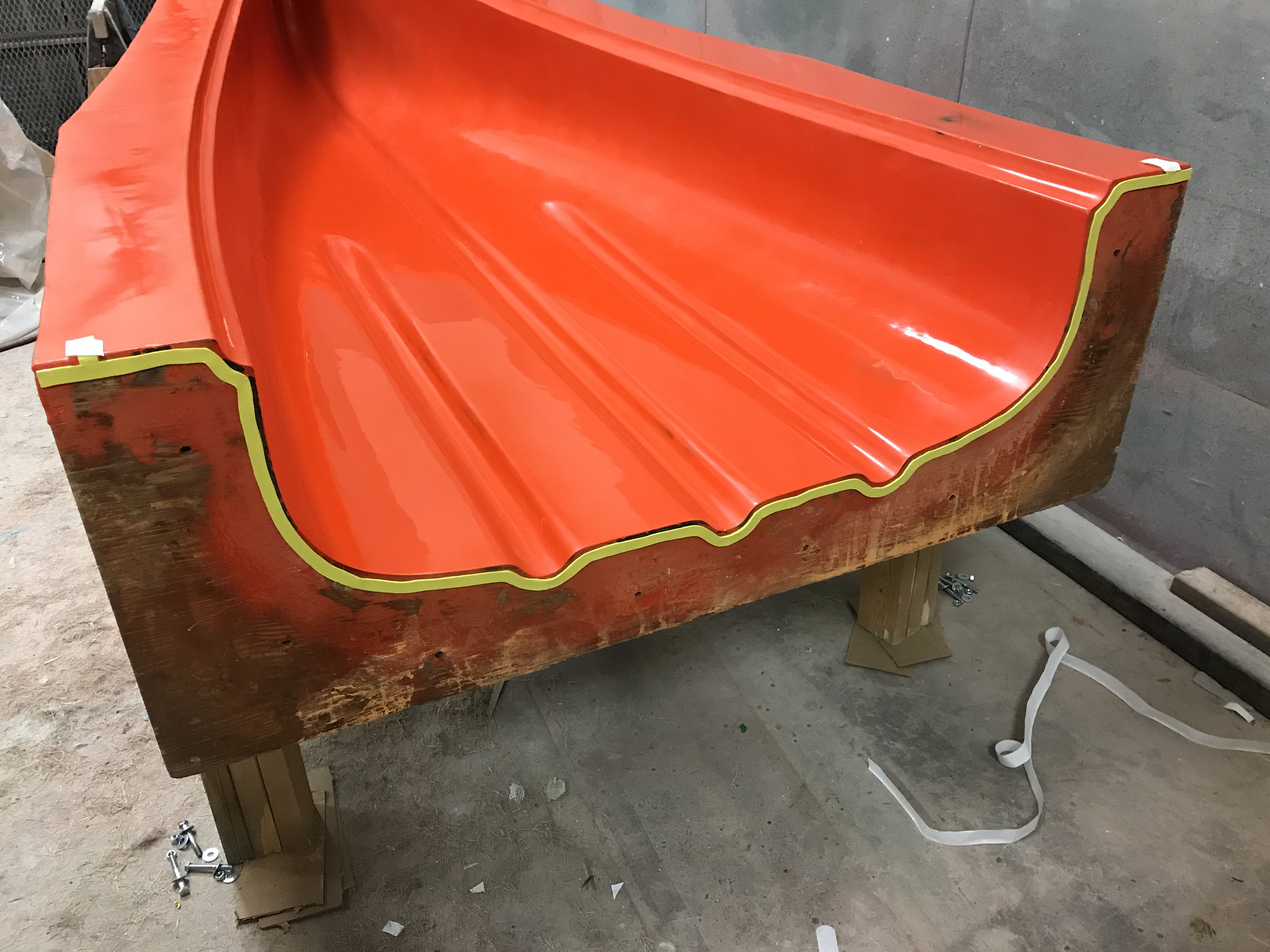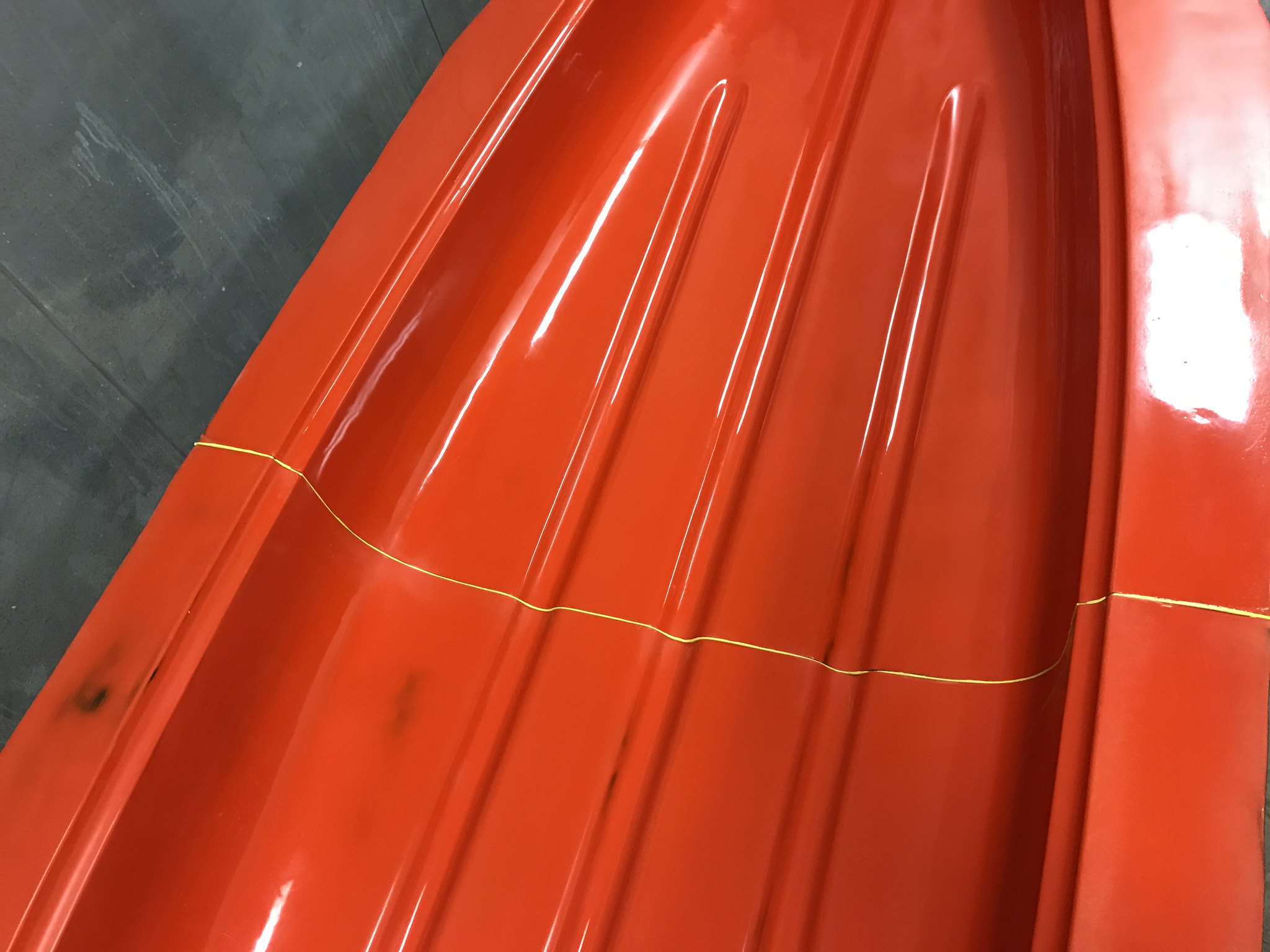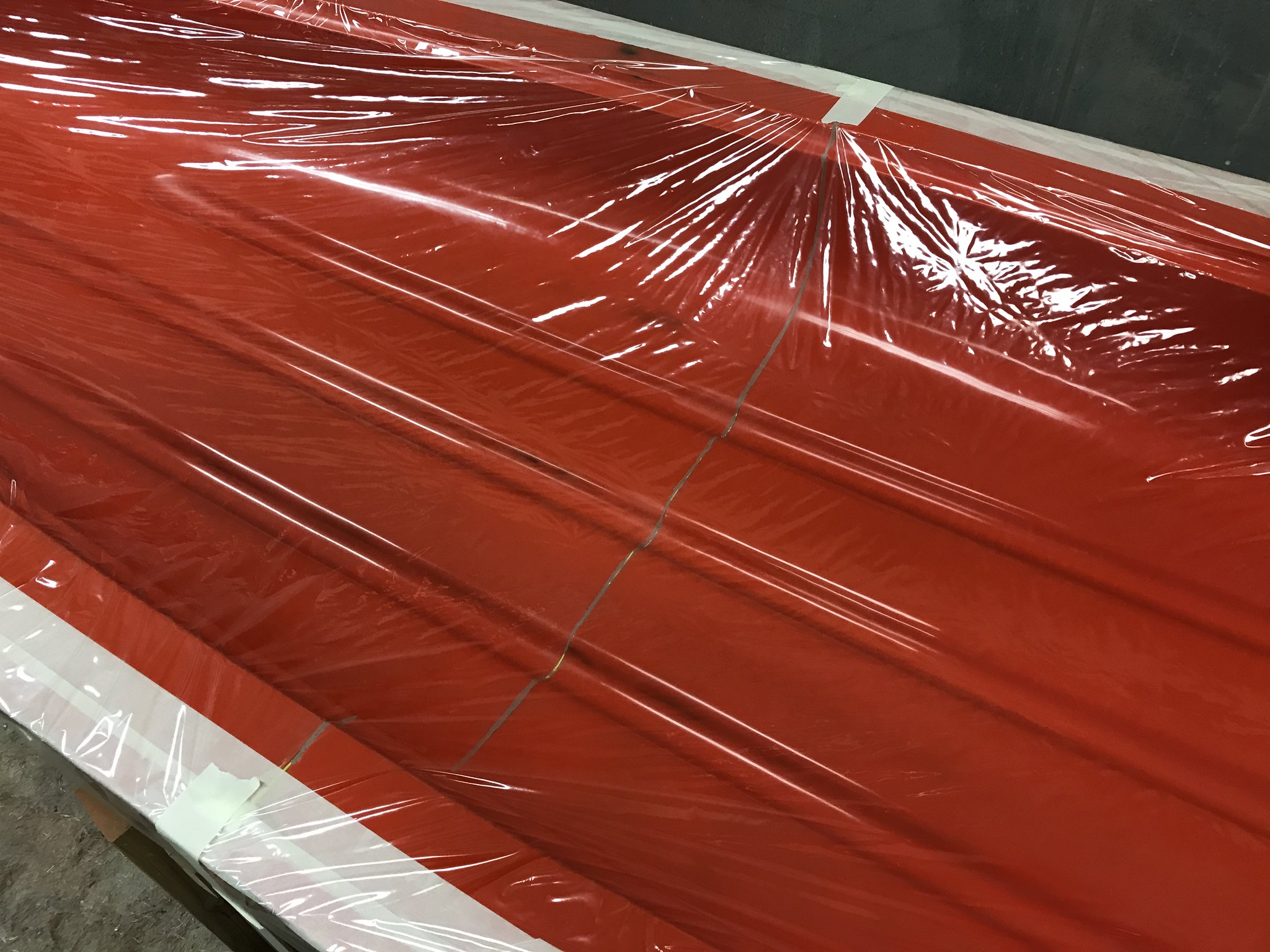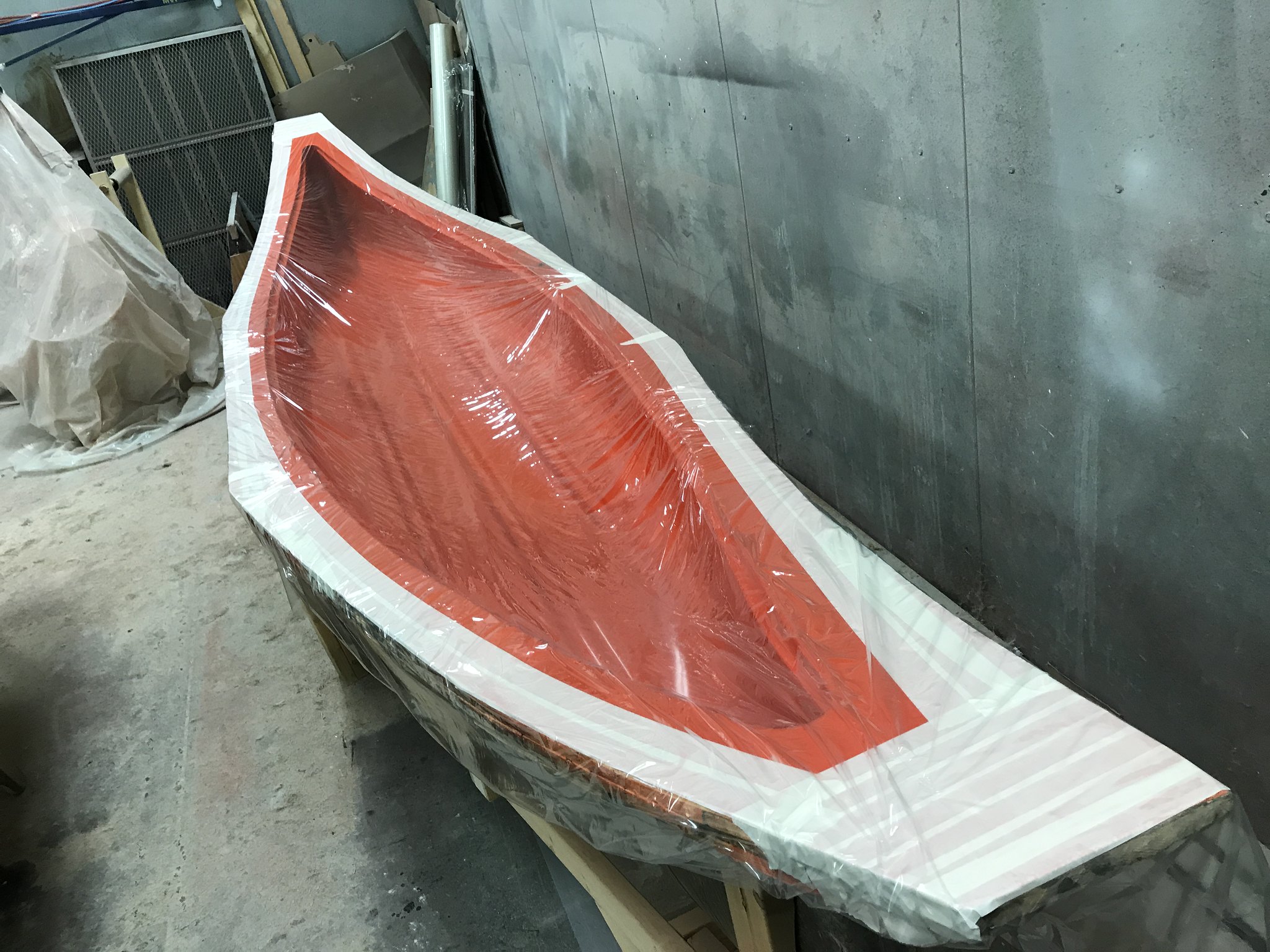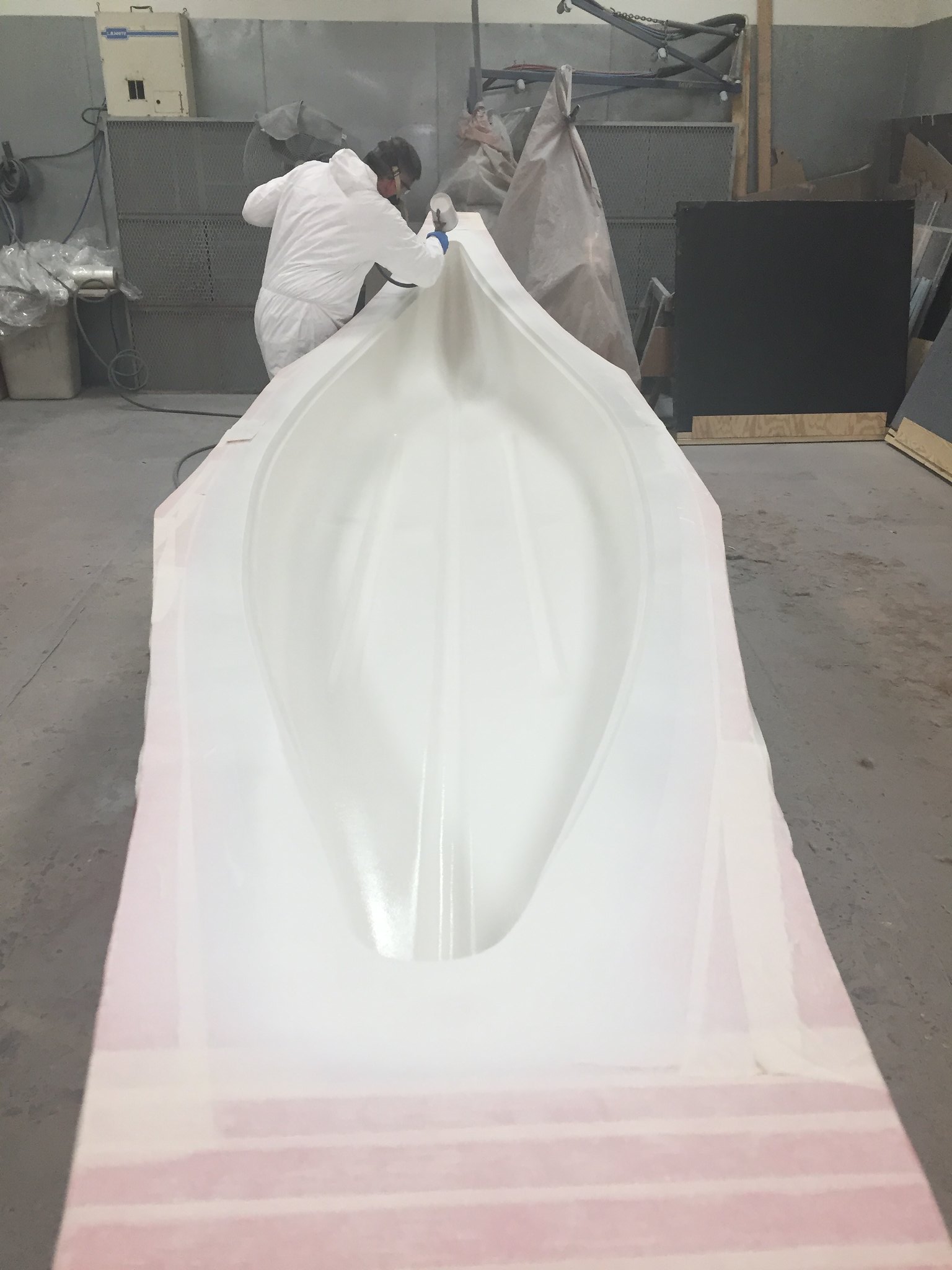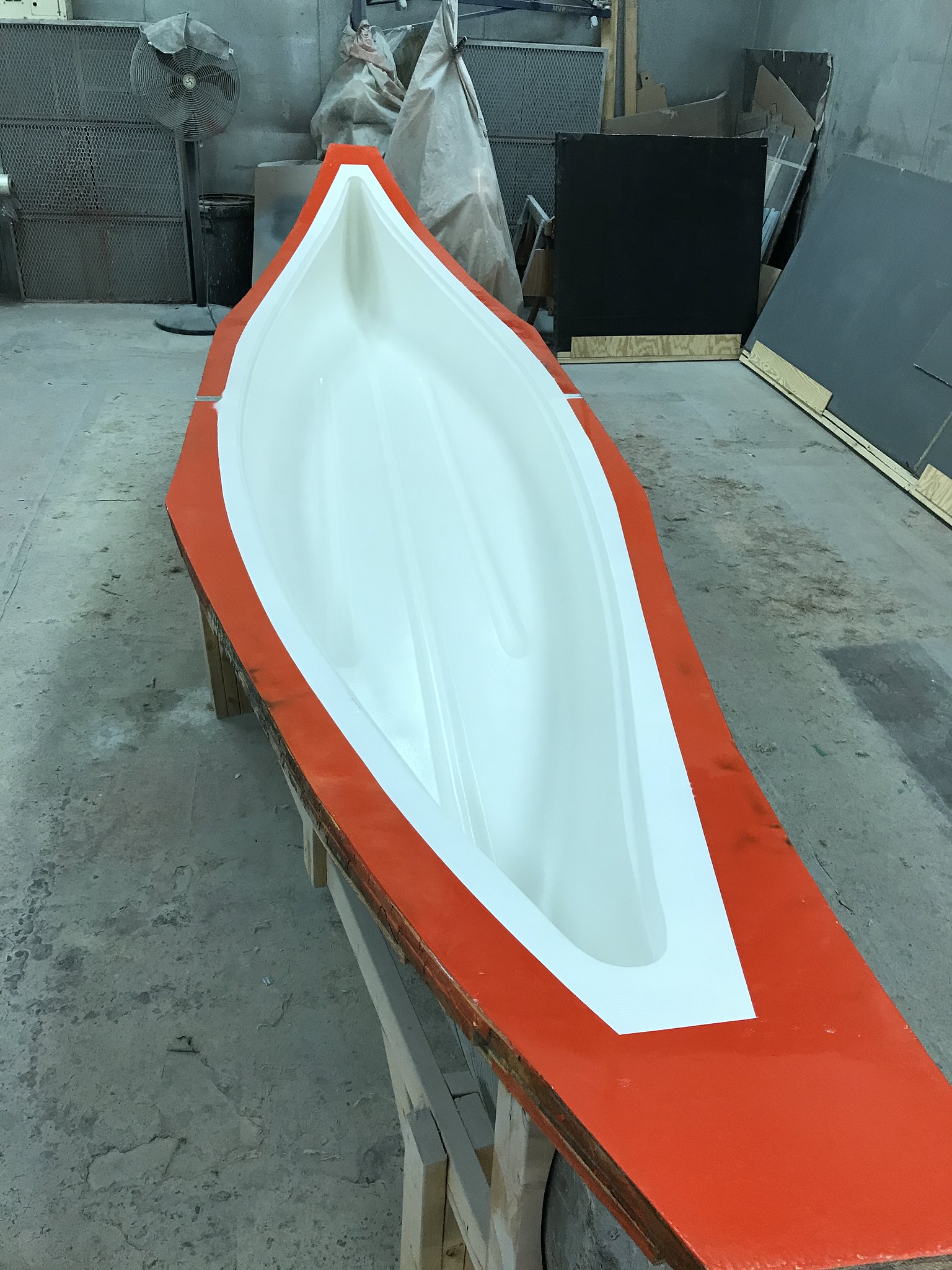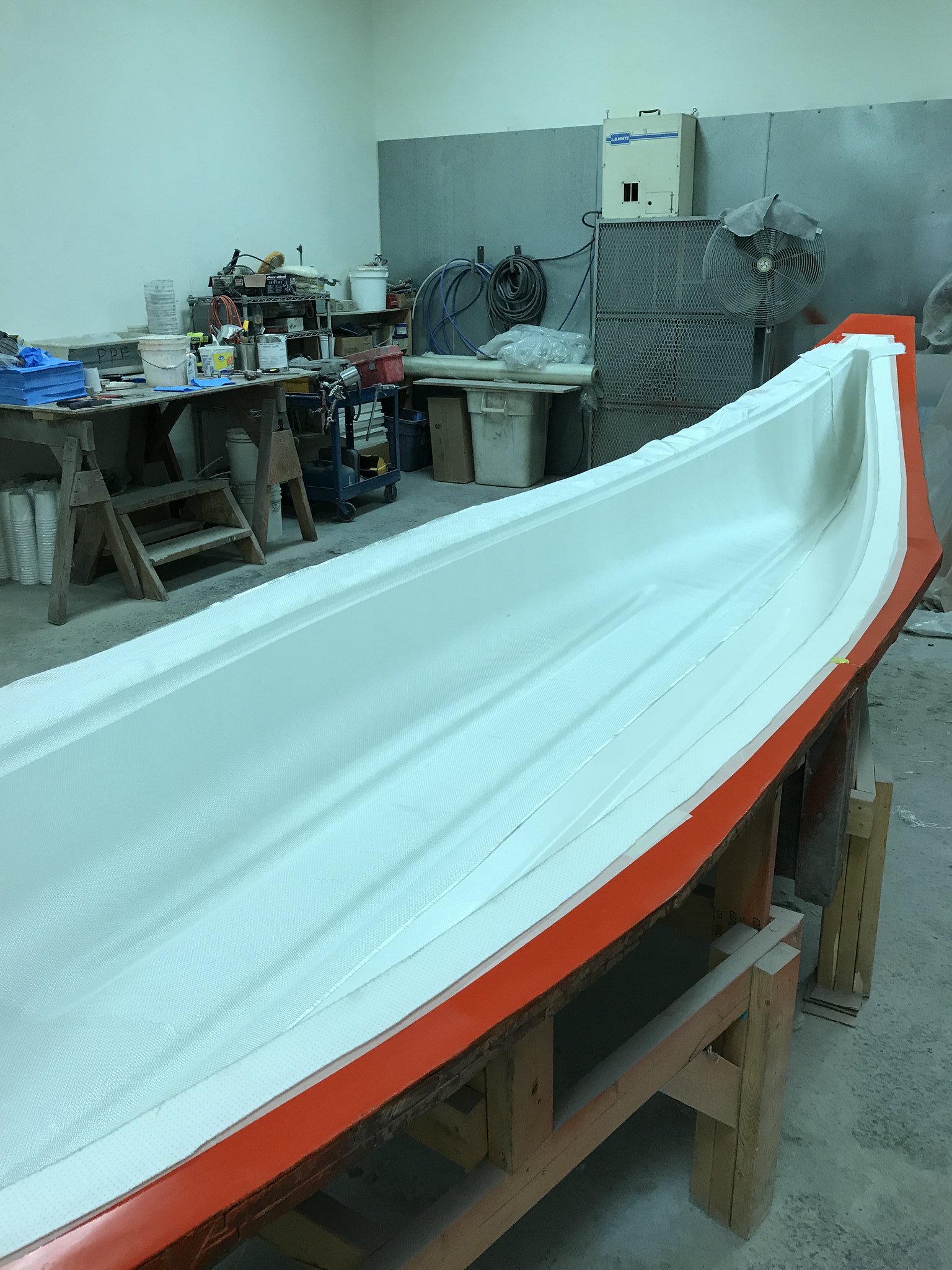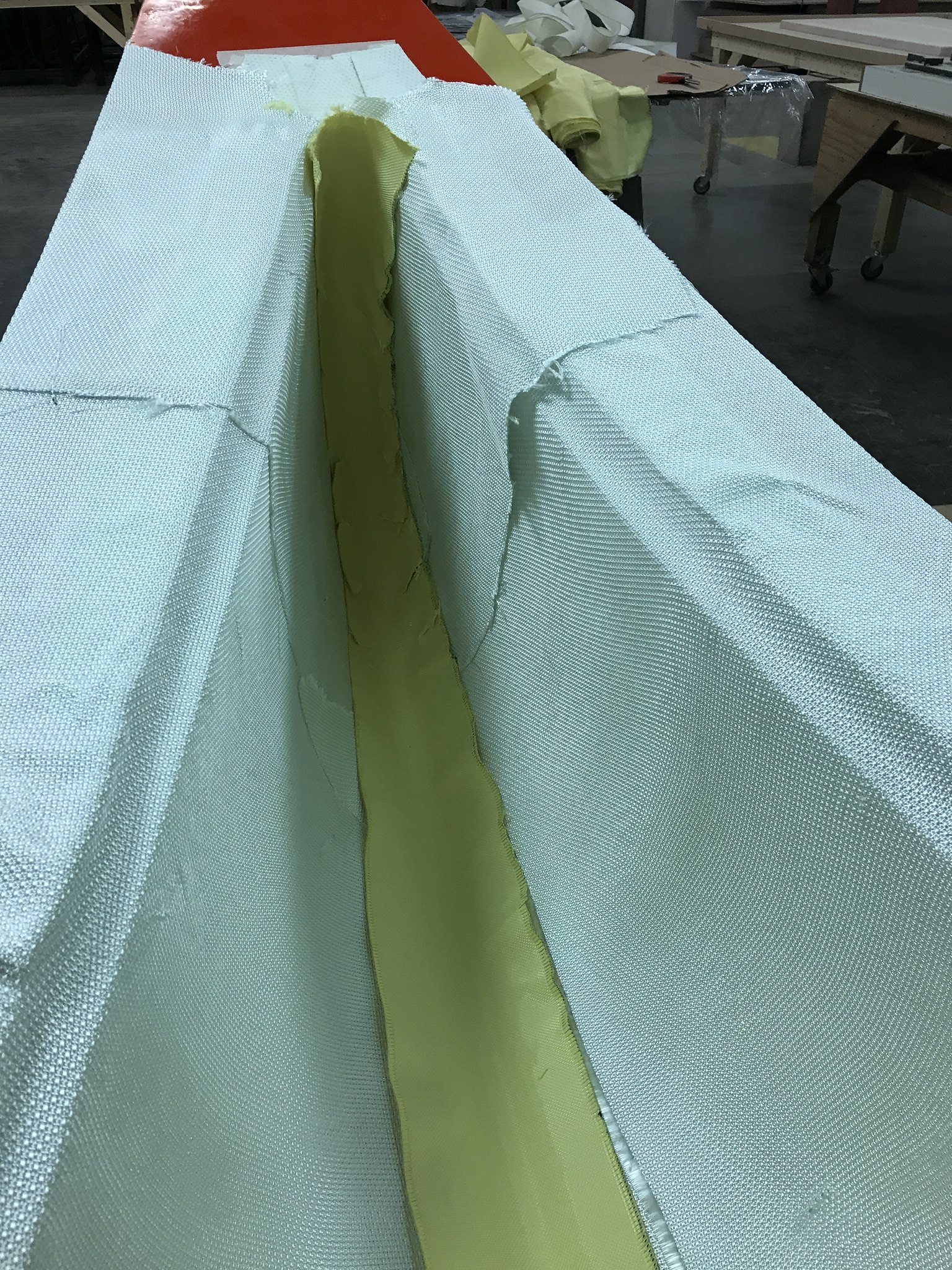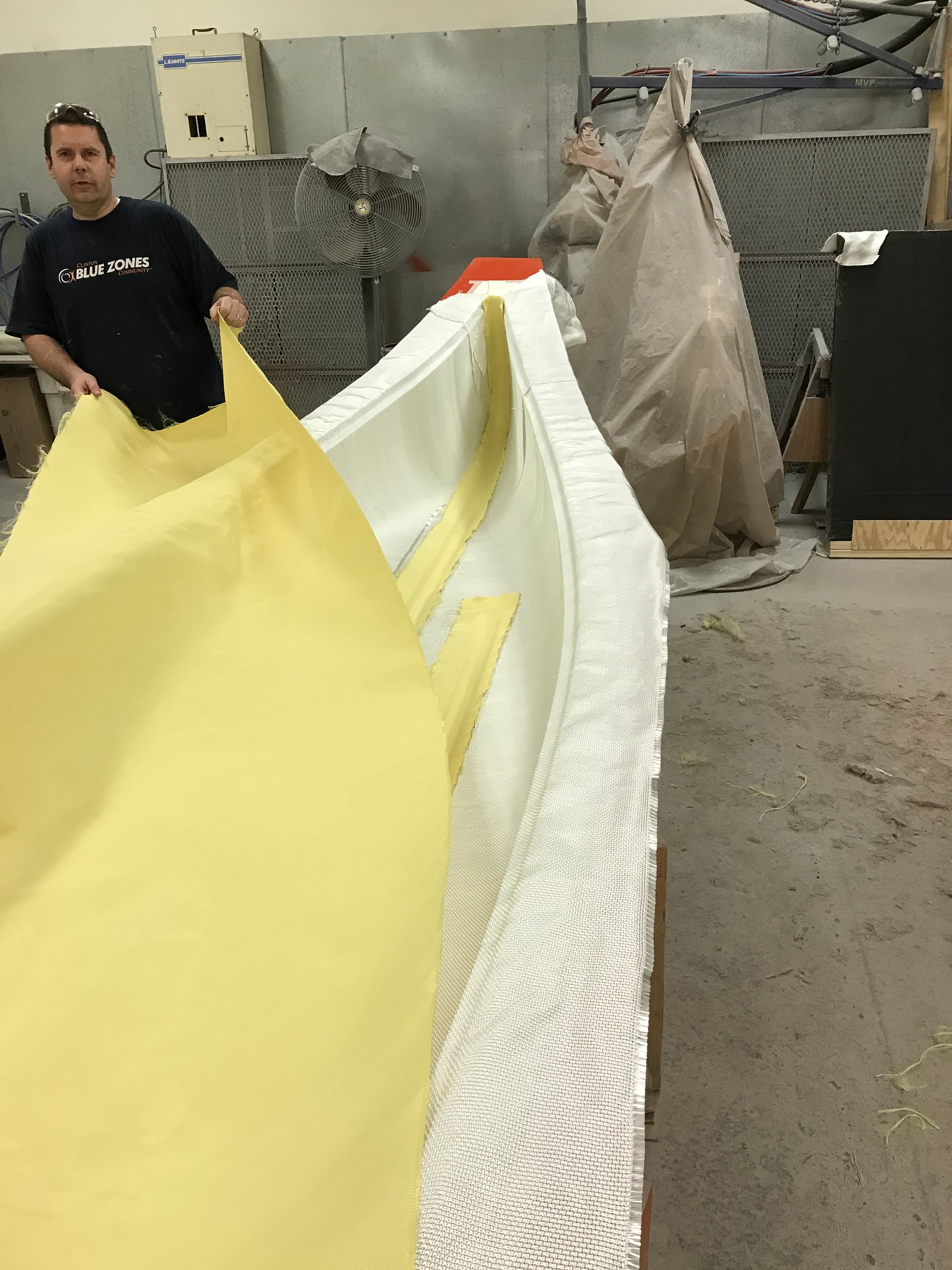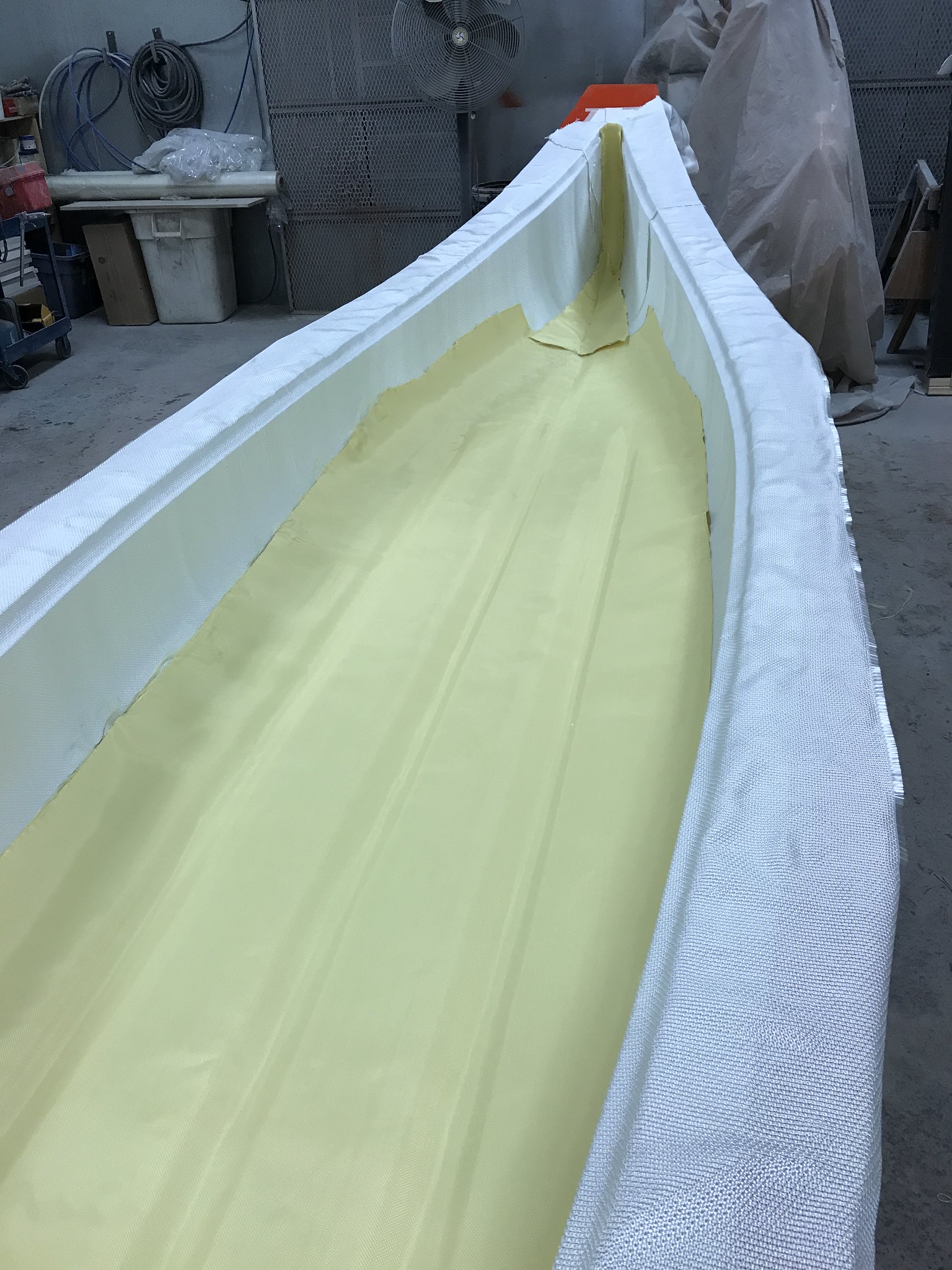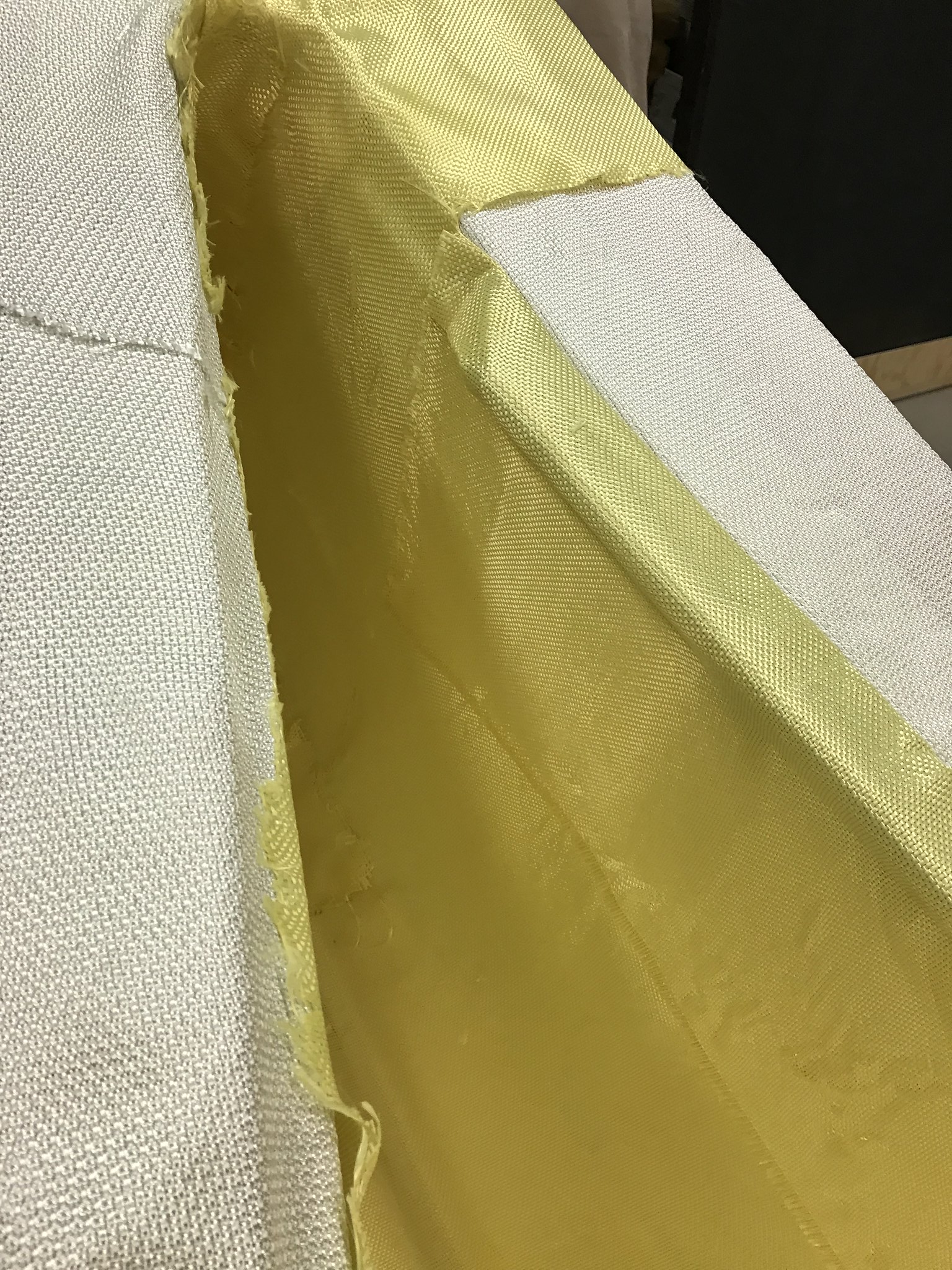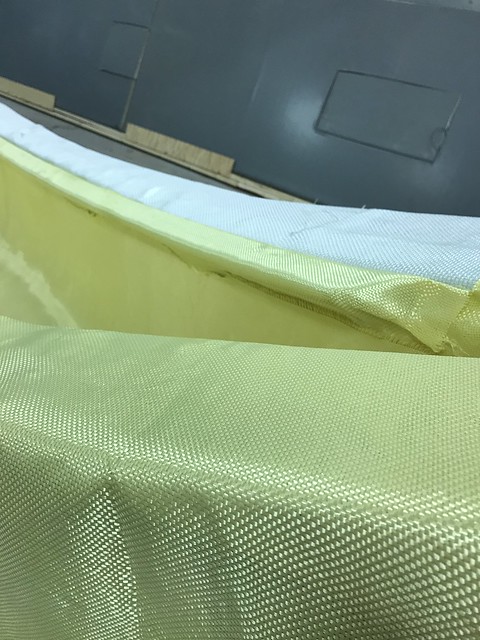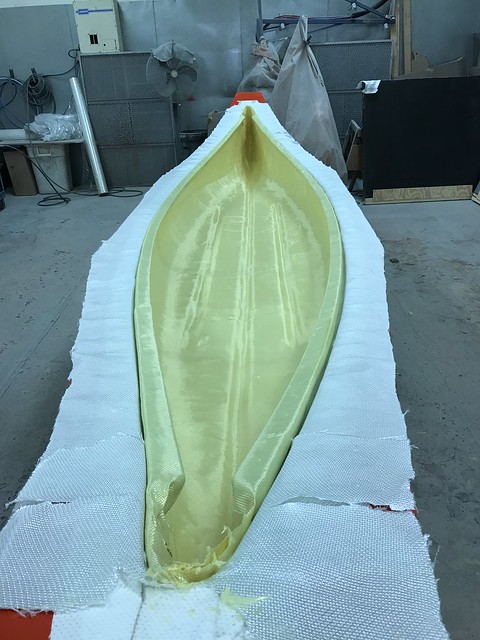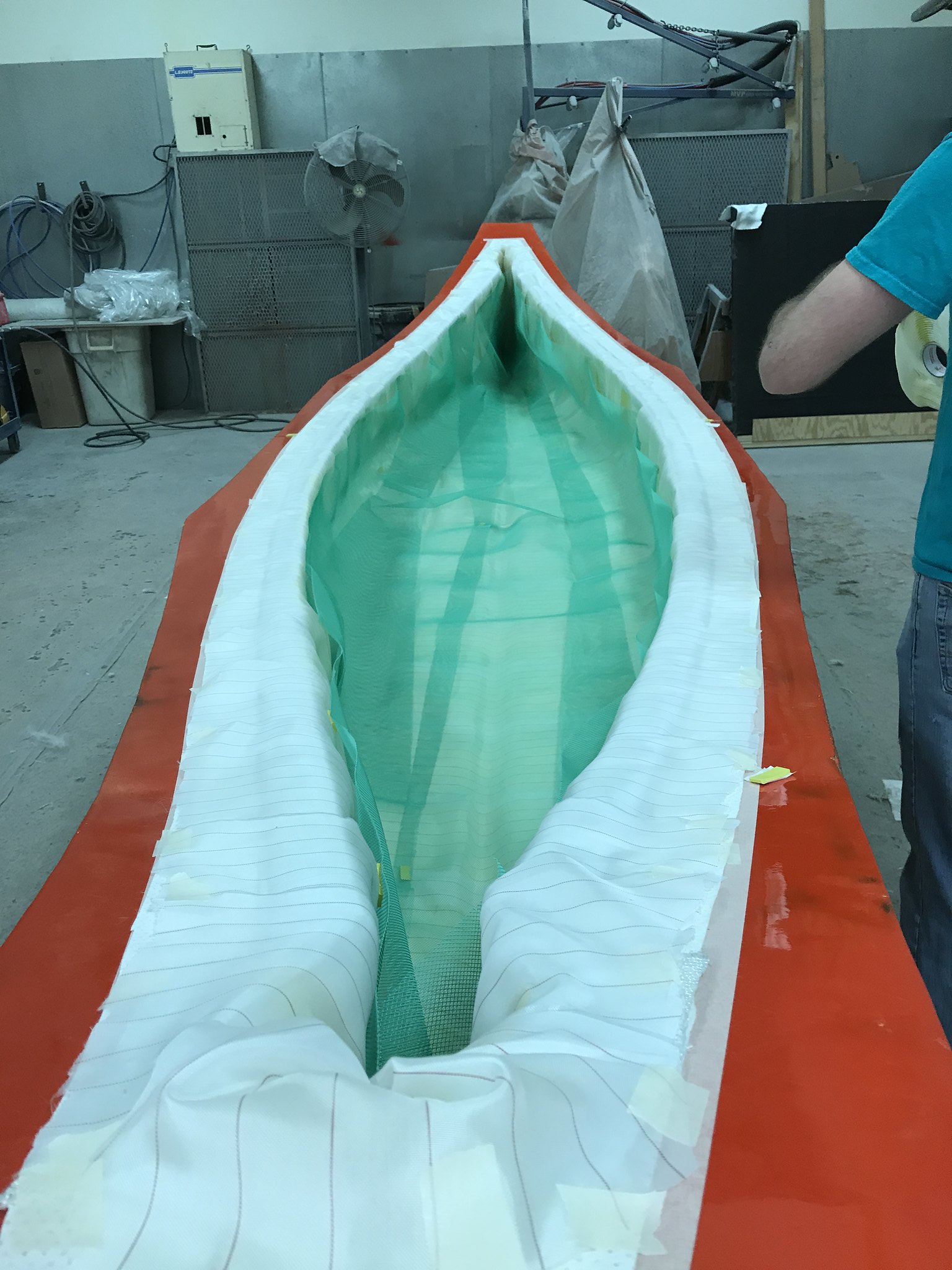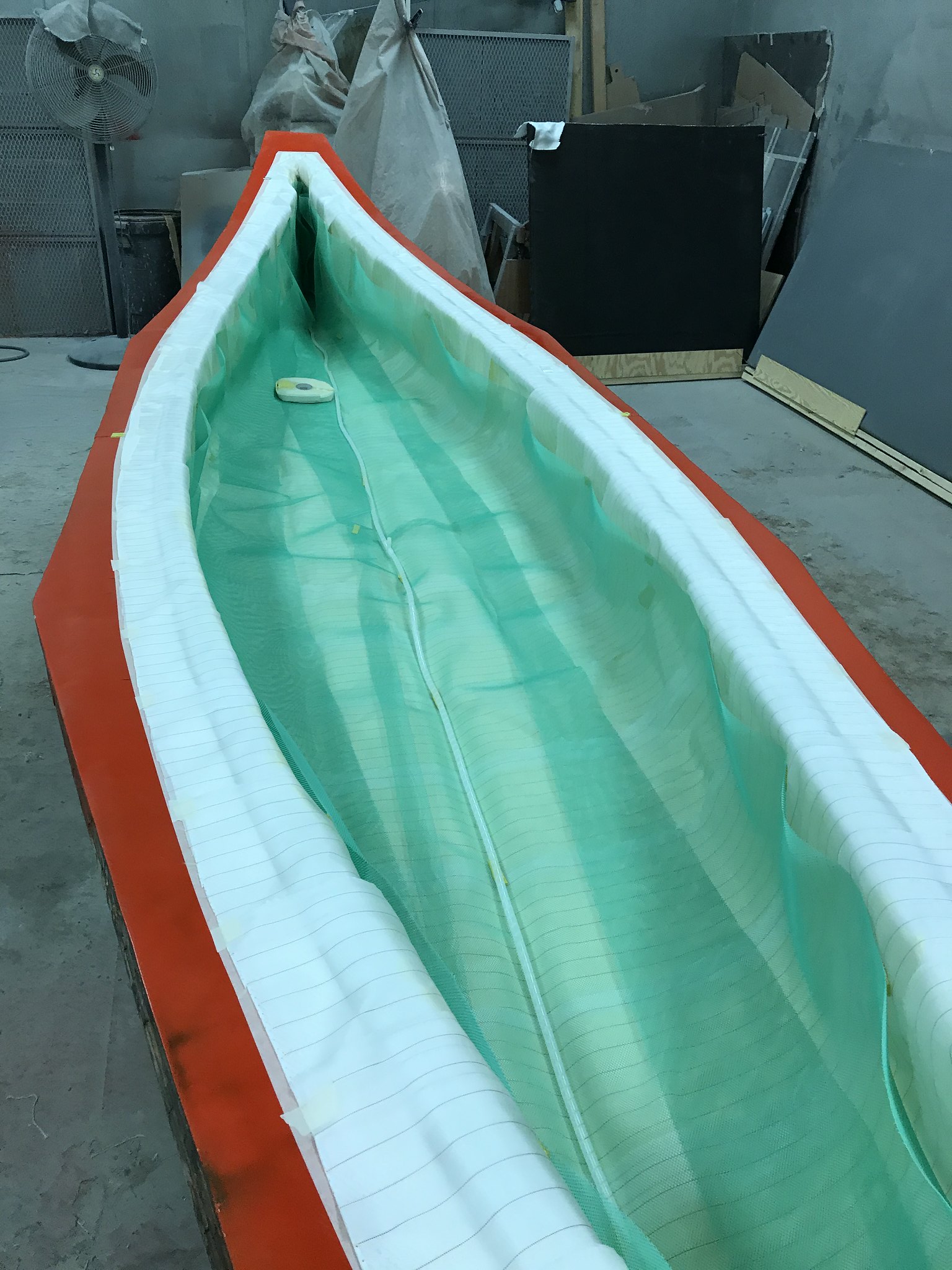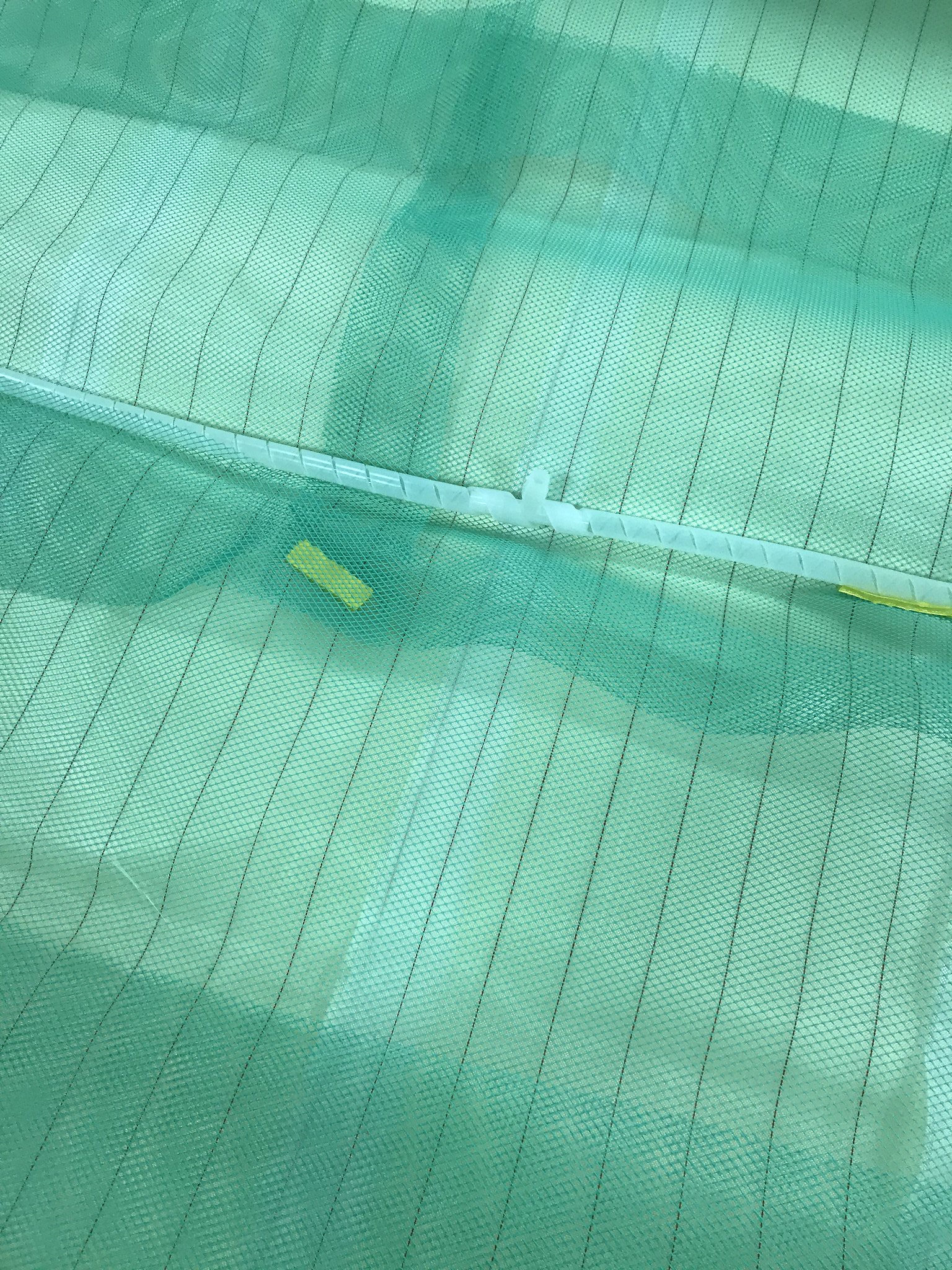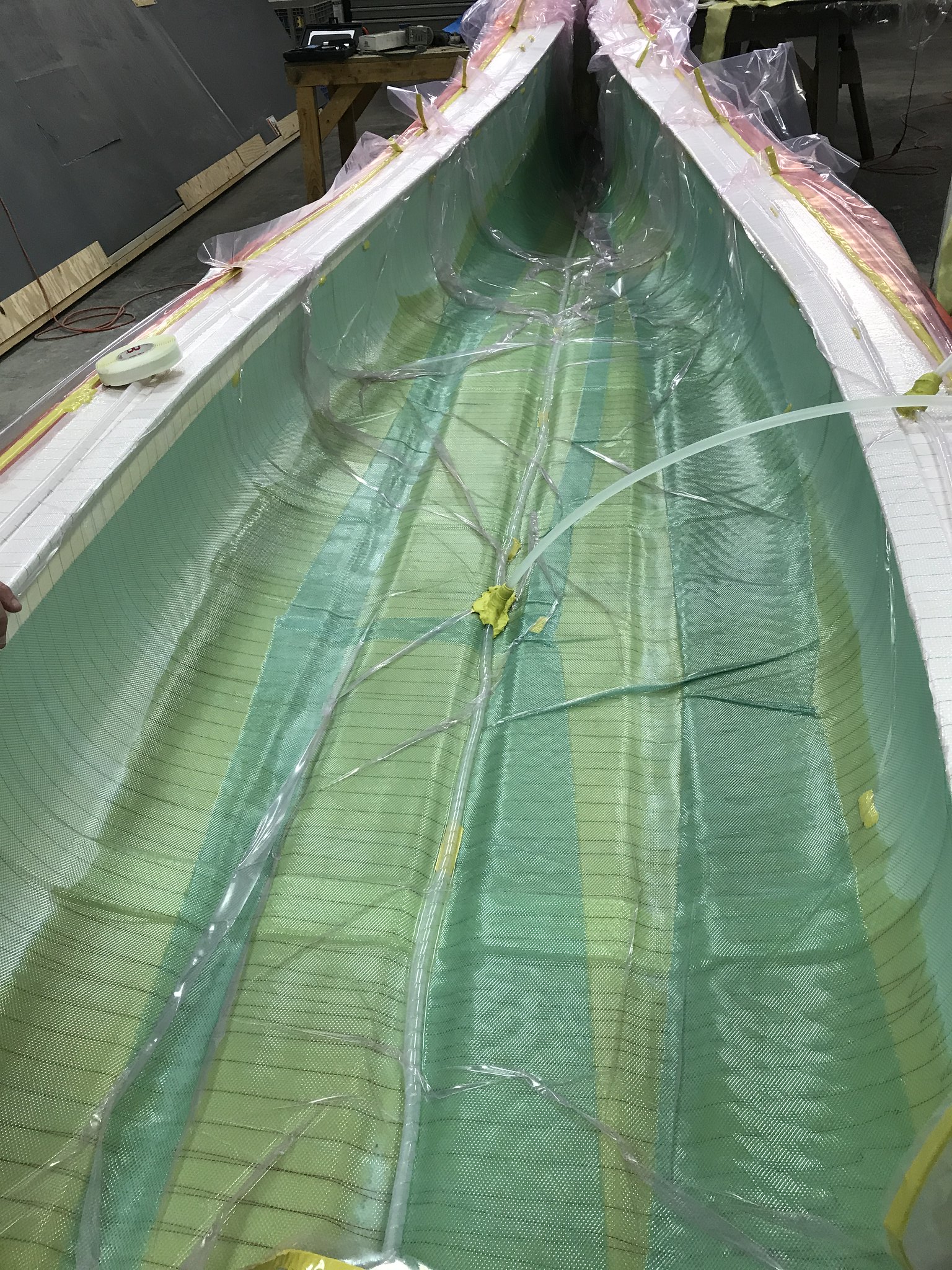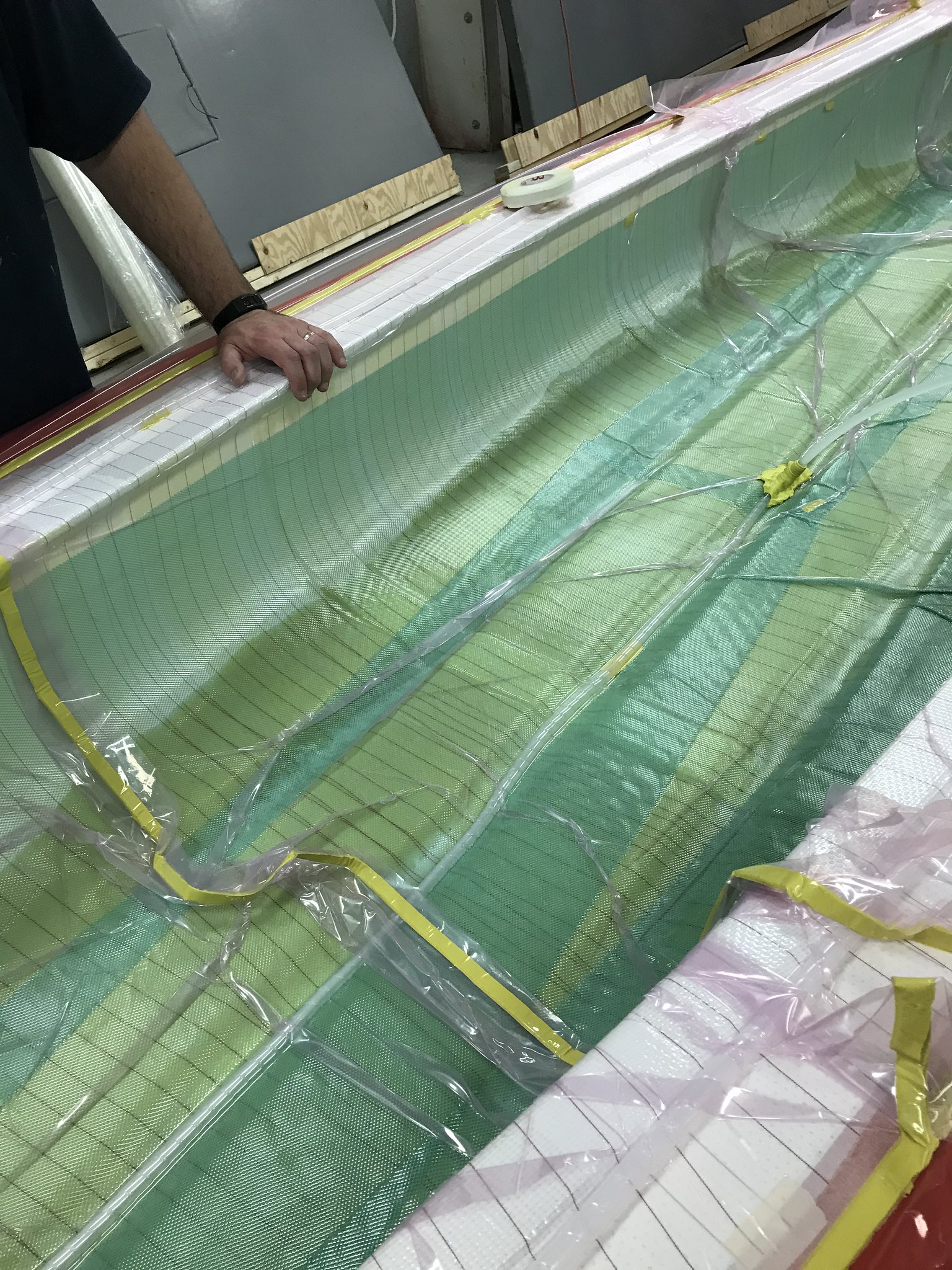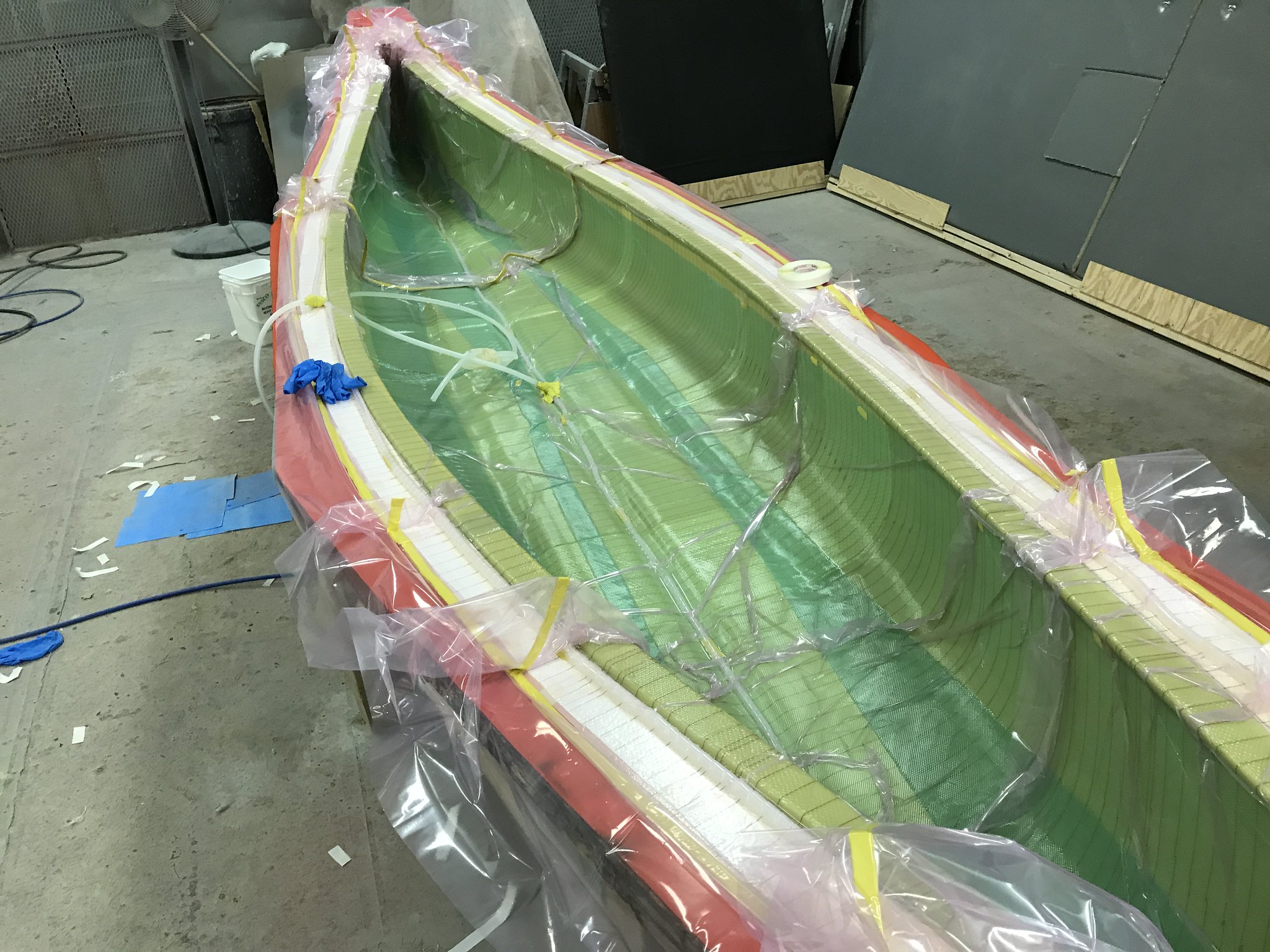After baking all day, the canoe was ready to de-mold. Drum roll........
I removed the vacuum bag this morning before starting the oven cure. Once that was finished, I began removing the greenflow and peelply. Now, I have removed both before, but never from an epoxy canoe after full oven cure.....you know, where the epoxy realizes its full durability properties.
Thankfully, a couple of coworkers stuck around to help. There was blood, sweat and almost tears getting most of it off. My forearms look as though I fought off 30 cats....
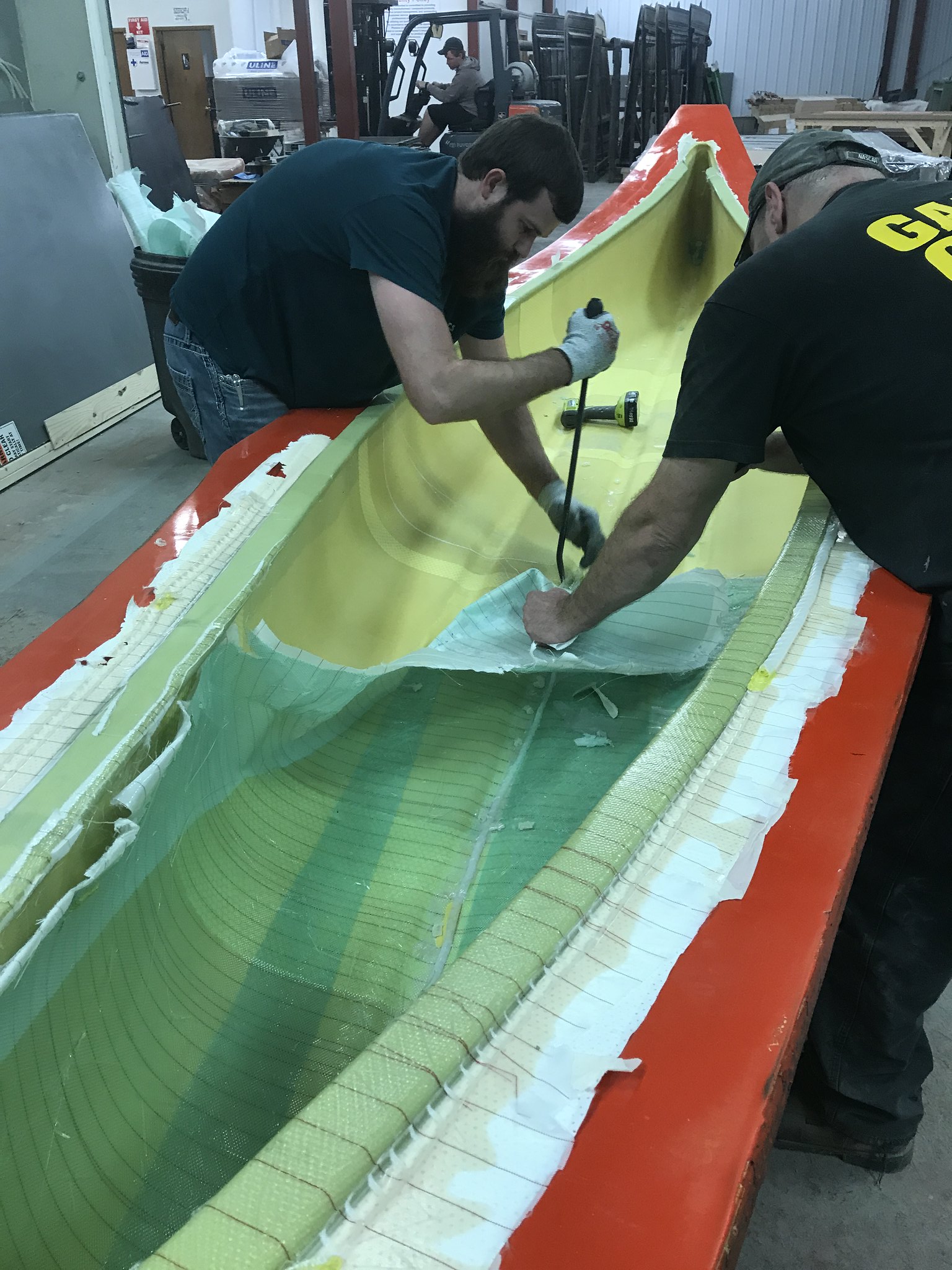 IMG_2873
IMG_2873 by
bctc95, on Flickr
Once the epic battle was won, we separated the mold and pulled out the hull......
 IMG_2875
IMG_2875 by
bctc95, on Flickr
 IMG_2874
IMG_2874 by
bctc95, on Flickr
 IMG_2876
IMG_2876 by
bctc95, on Flickr
Unfortunately, there are some flaws that I am not happy about.
We had some bridging under vacuum during infusion. I had hoped that these would just fill with epoxy, rather than distort the gelcoat on the other side. There are a few wrinkles, and some deformity in the keels. Luckily, nothing a little FRP body work can't take care of.
 IMG_2881
IMG_2881 by
bctc95, on Flickr
The Soric ribs are easily visible under the one layer of Kevlar.
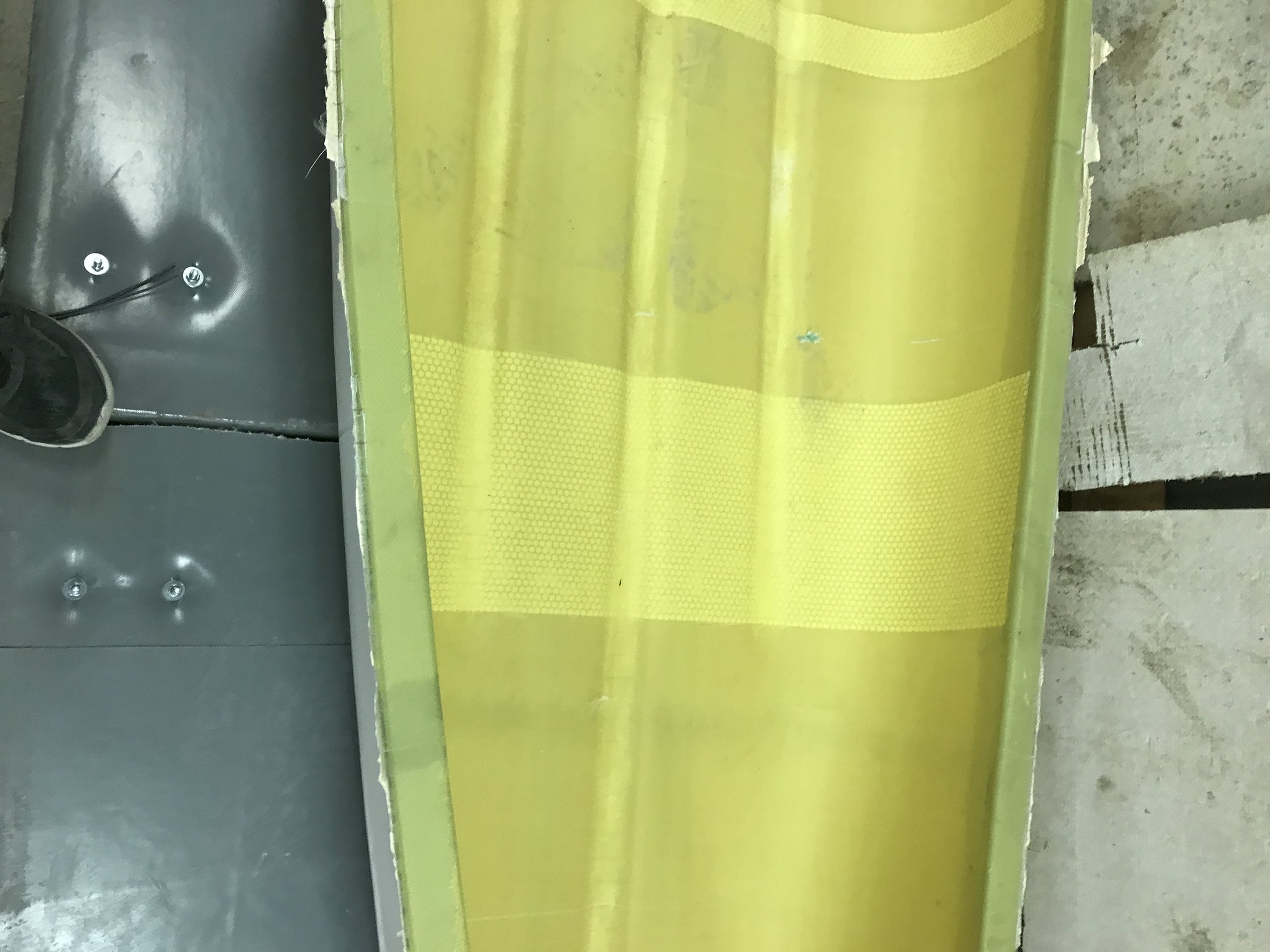 IMG_2879
IMG_2879 by
bctc95, on Flickr
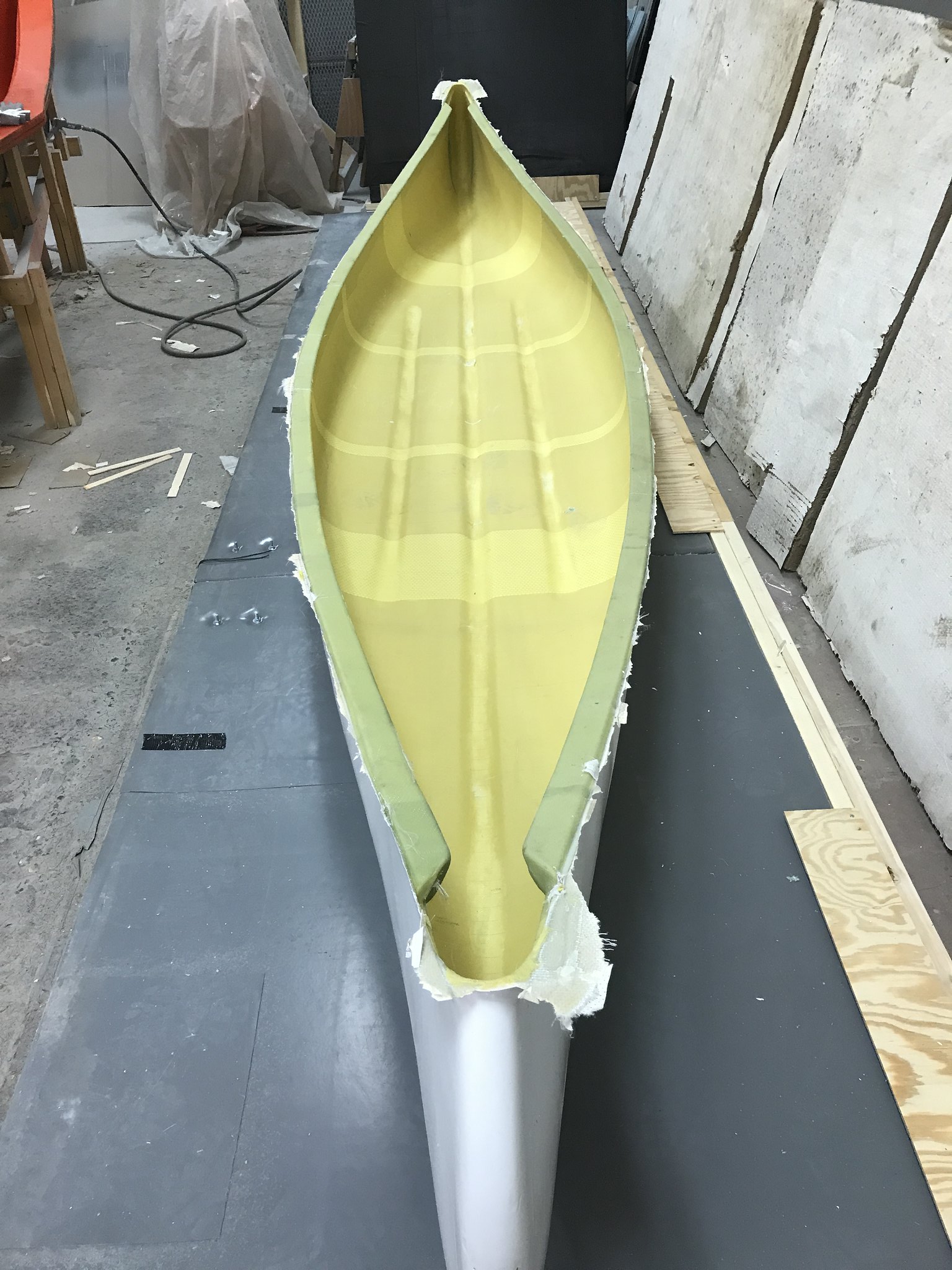 IMG_2880
IMG_2880 by
bctc95, on Flickr
 IMG_2878
IMG_2878 by
bctc95, on Flickr
I need to trim off the excess material at the ends and sand the excess epoxy from the sides of the gunwales.
 IMG_2885
IMG_2885 by
bctc95, on Flickr
Anybody have a suggestion for deck plates?
I can pick the canoe up over my head, but I bet it is heavier than my hopes. Once I get it cleaned up, I'll get a weight.
We are making a second canoe for my friend, so we'll make a few tweaks in the layup schedule and methods.
Now its time to mount seats, yoke, deck plates and a couple of thwarts!

